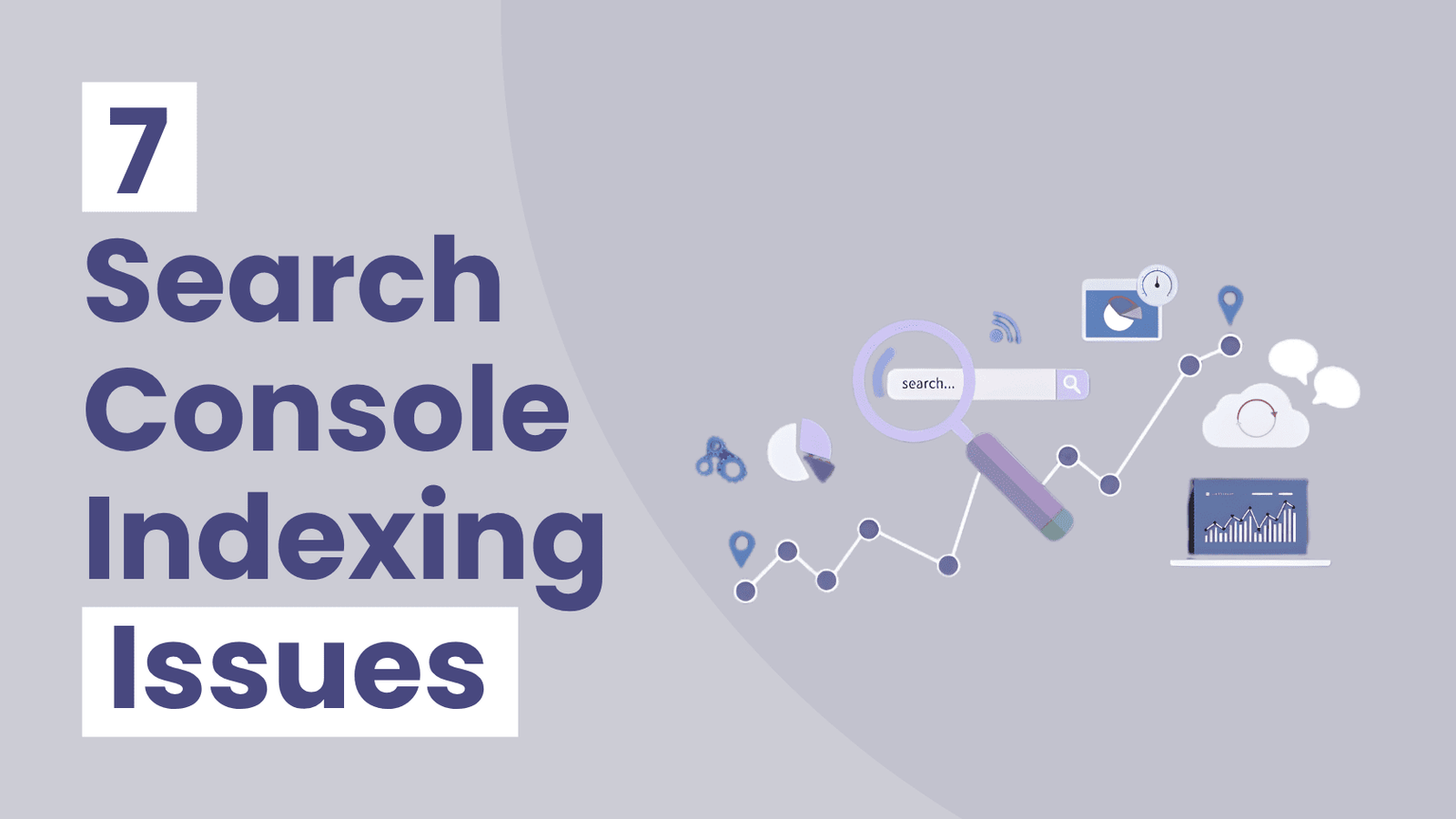Introduction
You’ve spent hours crafting great content, optimizing keywords, and designing a beautiful website.
But when you check Google Search Console, some of your pages aren’t indexed.
Frustrating, right?
It’s a common issue faced by webmasters, marketers, and even experienced SEOs.
The truth is, Google can’t rank what it can’t index.
In this blog, we’ll walk through the 7 most common Google Search Console indexing issues and, more importantly, how to fix them effectively.
By the end, you’ll know how to ensure your website stays visible, discoverable, and primed for consistent organic growth.
1. Crawled — Currently Not Indexed
This is one of the most frequent indexing errors reported in Google Search Console.
It means Google has crawled your page but decided not to index it — at least for now.
Possible Causes:
- Thin or duplicate content
- Low-quality or repetitive information
- Weak internal linking structure
Fix It:
- Update your content to add more depth and value.
- Make sure each page has a unique title and meta description.
- Strengthen your internal links — connect new content to your most authoritative pages.
Pro Tip: Regularly update older articles. Google’s algorithm favors freshness and relevance.
2. Discovered — Currently Not Indexed
This status means Google knows about your page but hasn’t crawled it yet.
This can happen when your website has too many new URLs or a slow loading speed.
Possible Causes:
- Server overload
- Poor crawl budget management
- Low domain authority
Fix It:
- Improve your website speed and performance.
- Use internal links from high-traffic pages to signal importance.
- Submit the URL manually via Search Console > URL Inspection Tool.
According to Google Search Central, improving crawl efficiency can help new pages get indexed faster.
3. Duplicate Without User-Selected Canonical
Google found multiple versions of similar pages but didn’t know which to index.
This issue often occurs in e-commerce sites or blogs with filtered URLs.
Possible Causes:
- Parameterized URLs
- Similar product or category pages
- Missing canonical tags
Fix It:
- Add canonical tags pointing to your preferred page version.
- Consolidate duplicate pages using 301 redirects where needed.
- Audit your site structure with tools like Screaming Frog or Sitebulb.
When your Search Engine Optimization (SEO) setup is clean, Google understands your site structure better — improving ranking potential.
4. Blocked by Robots.txt
Sometimes, your pages can’t be indexed because they’re blocked in the robots.txt file.
It’s like telling Google: “Don’t go there.”
Possible Causes:
- Incorrect Disallow commands
- Blocking important sections like /blog/ or /products/
Fix It:
- Check your robots.txt file in Search Console.
- Remove unnecessary Disallow rules.
- Use Allow: directives where you want Google to crawl.
Use robots.txt Tester to validate changes before publishing.
5. Page with Redirect
If you’ve redirected a URL but it’s still showing indexing issues, that’s a sign of redirect chain or loop problems.
Possible Causes:
- Multiple redirects (A → B → C)
- Broken redirects leading to 404 pages
- Temporary redirects are used instead of permanent ones
Fix It:
- Use 301 redirects for permanent moves.
- Avoid redirect chains; go straight from A → C.
- Regularly audit redirects using Ahrefs or Screaming Frog.
Businesses that maintain clean redirects experience faster indexing and improved link equity, a simple yet powerful Digital Marketing Agency insight.
6. Soft 404 Errors
A soft 404 occurs when a page tells users it’s valid, but Google thinks it’s a “not found” page.
This typically happens when pages have little to no useful content.
Possible Causes:
- Empty pages or placeholders
- Thin blog posts with little value
- Missing metadata or confusing structure
Fix It:
- Add useful, relevant information to each page.
- Avoid auto-generated or placeholder pages.
- Return a proper 404 status for truly missing pages.
Remember, helpful content updates (like Google’s recent Helpful Content and Core Updates) prioritize high-value pages with user-focused information.
7. Alternate Page with Proper Canonical Tag
This issue means your canonical tags are set up correctly, but Google has decided not to index the alternate version.
It’s not necessarily an error — more of a notice.
Possible Causes:
- Google prefers another version of the same page.
- Duplicate or similar metadata.
Fix It:
- Ensure canonical tags are consistent and valid.
- Avoid linking to alternate URLs unnecessarily.
- Focus on unique, intent-driven content across all versions.
If you’re using AMP or international versions, double-check their canonical setup too.
How Search Console Updates Affect Indexing
Google has been refining its Core Updates and indexing systems for better content discovery.
The March 2024 Core Update, for example, placed higher emphasis on:
- Content originality
- Technical SEO quality
- Site experience metrics (Core Web Vitals)
You can read more about this on the Google Search Status Dashboard.
Businesses that regularly monitor their indexing performance and resolve issues early see faster recovery and better long-term visibility.
How Social Signals Support Indexing
While social media doesn’t directly affect indexing, it does amplify visibility.
When content is shared across Social Media Marketing channels, Google detects engagement signals that boost crawl frequency and discovery.
Encouraging content shares through social campaigns can accelerate how quickly new pages get indexed.
Conclusion:
Indexing issues are not failures — they’re signals.
They tell you where your website can improve to meet Google’s ever-evolving standards.
To summarize:
Monitor your Search Console weekly.
Fix duplicate and crawl errors immediately.
Improve content depth and internal linking.
Align your technical SEO with Core Updates. Remember, content is only as powerful as its visibility.
For brands that take indexing seriously, visibility turns into traffic — and traffic turns into growth.


